This is just one of countless times I’ve strolled this connector-trail. It’s different every time. This time, I was literally arrested mid-stride to snap this.
ɕ
At some point I realized I take a lot of photos of trees…
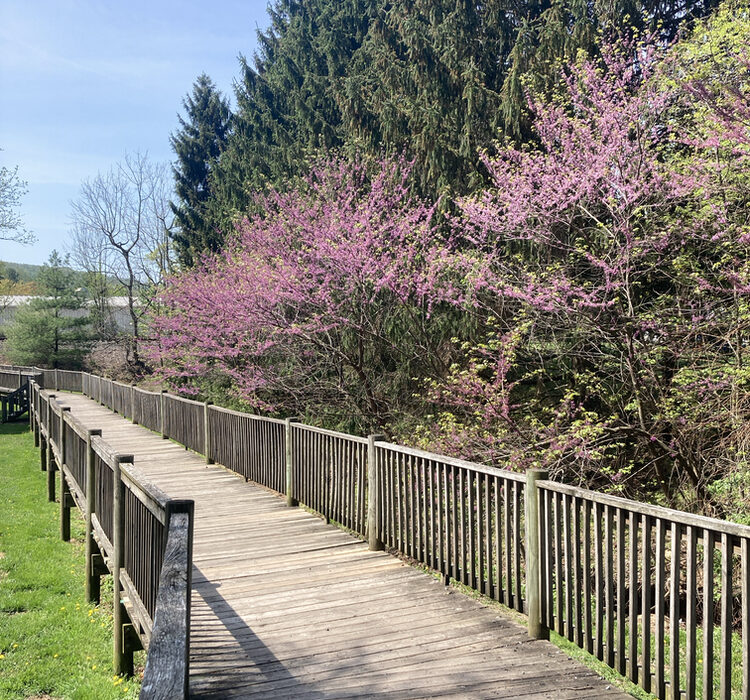
This is just one of countless times I’ve strolled this connector-trail. It’s different every time. This time, I was literally arrested mid-stride to snap this.
ɕ
I have had the privilege of standing—not in the exact cedars and mountains you’ll discover below—but nonetheless in cedars, in mountains, in northern Japan. It wasn’t a pilgrimage. But it sort of was. It was a long train ride. A very long walk. A very nearly exhausting long ascent. No guide. Just a curiosity. Just two of us. At the top… I realized that the journey—if we had wanted to continue—had only just begun. Choices about time and commitments to others were made.
As a faint mist settles in among the towering cedar trees (some more than 1,000 years old), our funeral procession slowly ascends Mt Haguro’s stone stairway. It’s summer, but the air here is still cool. When the poet Matsuo Bashō made a similar journey through these holy mountains in 1689, he wrote a haiku describing the summer wind being ‘scented’ with the clearly visible snow of Mt Gassan in the distance. Today, it smells of pine needles and earth.
~ Tim Bunting from, More radical and practical than Stoicism – discover Shugendō
slip:4upyie4.
Is mine a story I’ve shared, or a suggestion?
ɕ
I could do a lot worse than sitting staring at trees. We know they’re alive, and yet they’re so still.
Trees are the longest-living life form we know, and manifest their temporal and geographic histories within their very bodies. In both form and function, trees tell the stories of their individual past, which is intimately connected to the history of their microenvironments as well as that of the planet. This distinctive and intimate relation between trees and their temporal and geographic histories is what we call the ‘embodied history of trees’.
~ Dalia Nassar from, Rooted
slip:4uaeea11.
“You must understand, young Hobbit, it takes a long time to say anything in Old Entish. And we never say anything unless it is worth taking a long time to say.” ~ JRR Tolkien
ɕ
Clear cut and plant. Clear cut and plant. I’m not sure, but this doesn’t feel like a great idea. I started reading this article thinking it wasn’t going to be that interesting. I was wrong. I’ve moved through forest where there are no trails: doing boundary monitoring and corridor maintenance for the Appalachian Trail Council, and bush–whacking towards rock climbing. It’s type-2 fun. But reading about what these super-humans do to move through clear-cut “blocks”… *shudders* that’s definitely type-3 fun.
Up in the sparsely populated wildernesses of the north, meanwhile, logging companies work 24/7 to fell trees for lumber, leaving behind ‘cut blocks’ – bleak fields of stumps, mulch, roots and detritus covering thousands of hectares. Following in their wake come hordes of seasonal tree planters, who drive for miles up dangerous roads to enter these remote areas. Staying in basic bush camps, off the grid and armed only with shovels and bags of saplings, they set about creating new forests from scratch.
~ uncredited, from The tree musketeers
slip:4usoai2.
“Fun” comes in 3 types: Type-1 fun is fun in the moment. Type-2 fun isn’t fun now, but we’re really going to enjoy this once we get past this sucky part, even more so as soon as we’re done, and especially years from now when we retell this story. Type-3 fun isn’t fun now, mistakes have been made, life choices need reconsidering and this is actually going to be a cautionary tale when retold.
ɕ
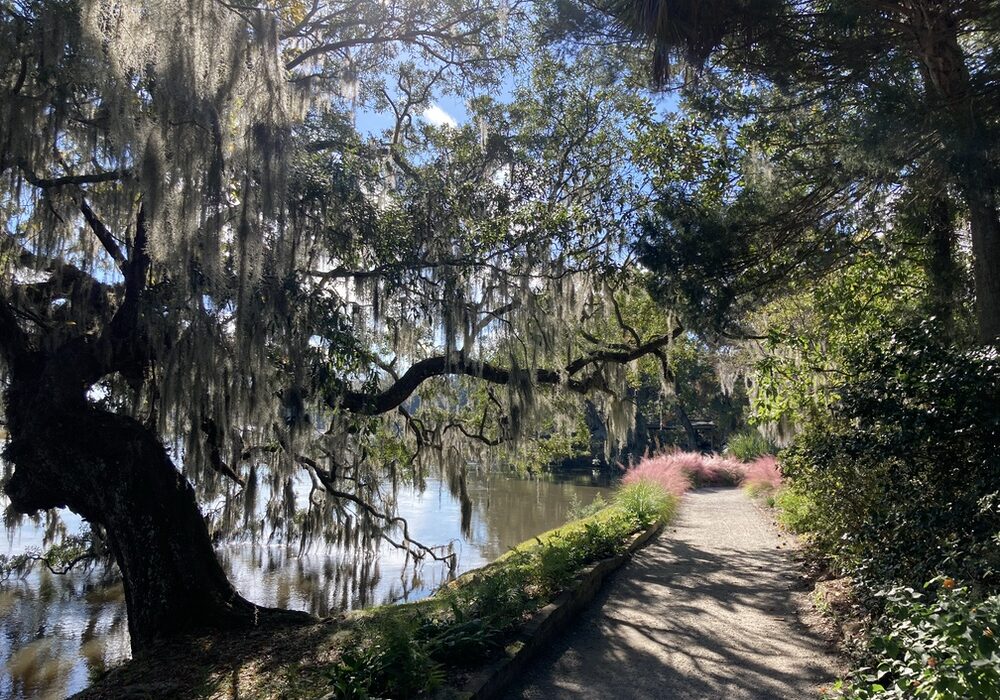
Picturesque. But the mosquitos… professional mosquitos!
Trees often have my attention. I find myself thinking about the spot where a tree is standing. Whether its seed fell there, or someone planted it, that spot is it. The tree is simply going to stand there as the sun whips across the sky thousands of times. I imagine the tree turning its leaves quickly (in tree time) to catch what light it can during each flash overhead.
Intrigued by this unheard of species, Wang set out to see it for himself and to collect specimens, which he shared with colleagues. One of them was Hsen Hsu Hu. A diligent paleobotanist, he had read of Miki’s fossil discovery five years earlier. As soon as he saw the peculiar needle pattern, Hu recognized the “water fir” as a Metasequoia.
~ Maria Popova from, The Remarkable Story of the Dawn Redwood: How a Living Fossil Brought Humanity Together in the Middle of a World War – The Marginalian
slip:4uteda2.
There’s a lot of interesting leaps in the story Popova shares. Across a war, across two cultures, but the vast time this tree has crossed is insane. We have fossils of this tree… and we still have the live tree. My mind boggles.
But mostly, Popova had my attention at trees.
ɕ
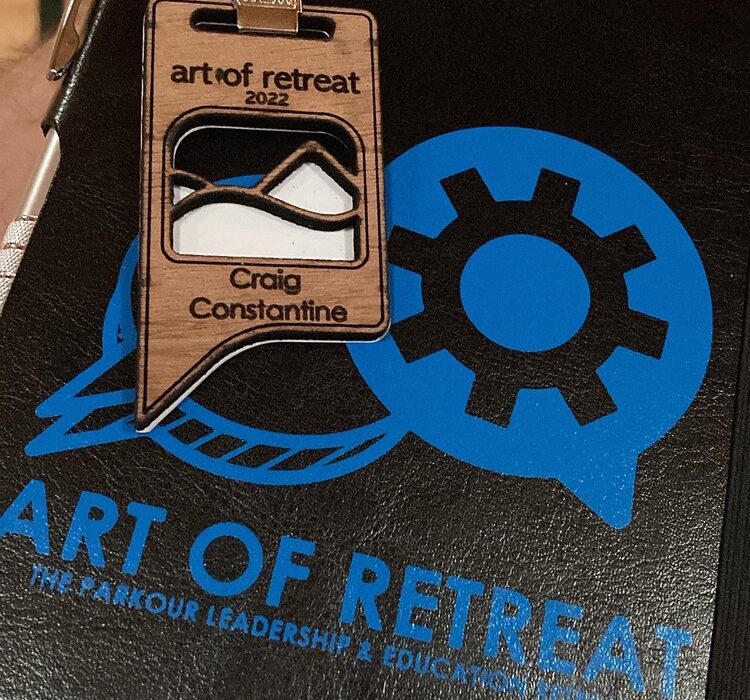
For several years I’ve been attending the Art of Retreat events in North America. Originally they were held in New York City, but the latest three were held outside of Seattle. I’ve been recording conversations for Art of Retreat’s own podcast over the years. If you’re interested in what goes on behind the scenes, I tried to unpack some of it over on a topic in the Podcaster Community, Field Recordings at Art of Retreat 2022.
I have a habit of trying to capture interesting photos from airplane windows. Often it’s solar or weather phenomenon, but on this trip out to Seattle I was surprised to see these forest fires. Fortunately, they weren’t very close to where the event was held, but “fire fog” was thing during much of the time I spent in Seattle and all of the time at the event.



A few shots from the location where the event was held…

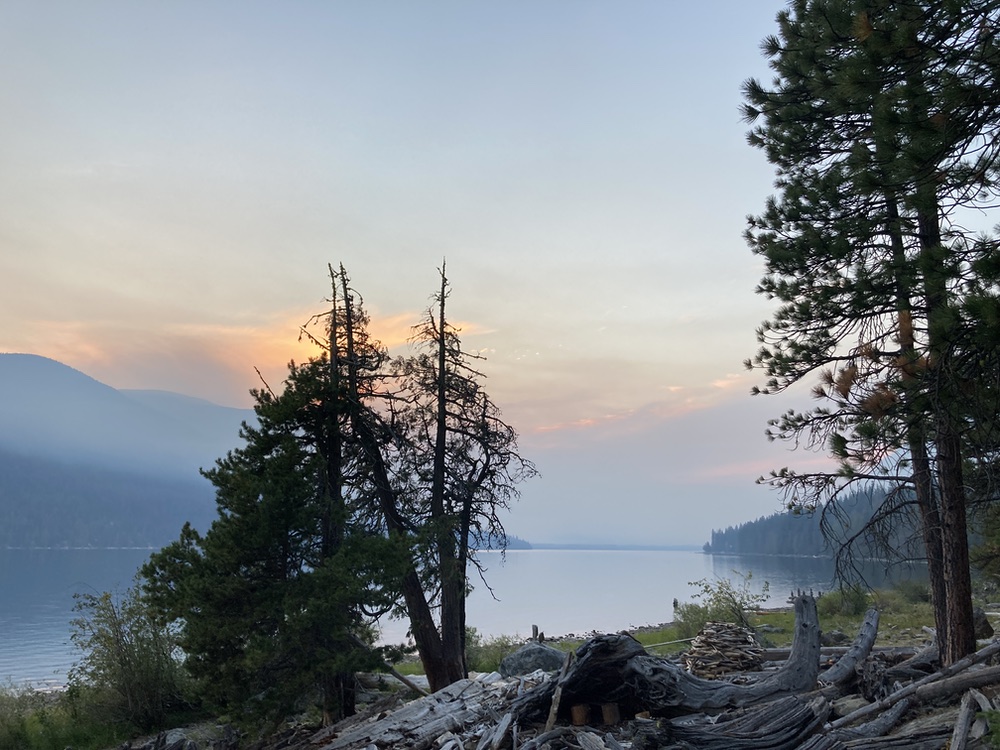

And one last random shot from a cool, mushroom–infused coffee spot in Seattle, Wundergrond Coffee.
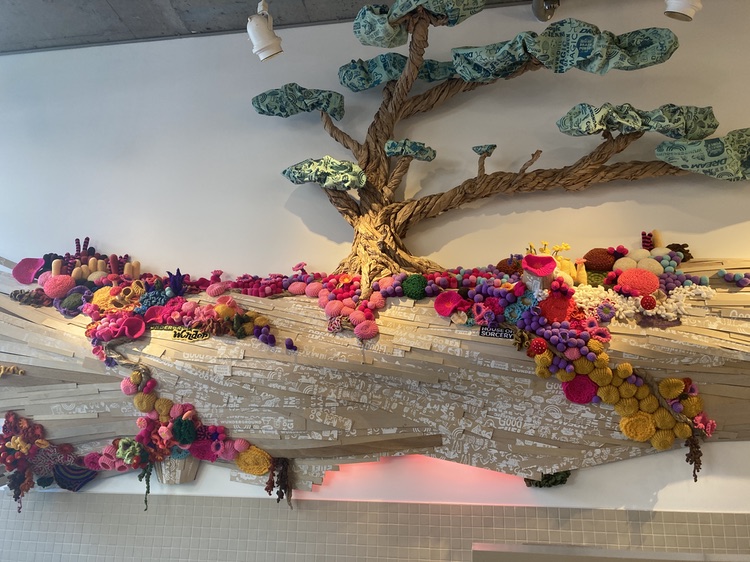
Random, but fun photos — hope you enjoyed them.
ɕ
“A tree is a little bit of the future,” Wangari Maathai reflected as she set out to plant the million trees that won her the Nobel Peace Prize. But a tree is also an enchanted portal to the past — a fractal reach beyond living memory, beyond our human histories, into the “saeculum” of time.
~ Maria Popova from, How to Face the Years with Confidence: The Mystery of the World’s Most Majestic Tree – The Marginalian
slip:4utepe1.
I recently flew from Philadelphia to Seattle. At one point in the journey I gazed down at the Cascade Mountains from the miraculous perch of technology that is an airliner, staring silently at countless trees in countless valleys.
ɕ
There’s an Etruscan word, saeculum, that describes the span of time lived by the oldest person present, sometimes calculated to be about a hundred years. In a looser sense, the word means the expanse of time during which something is in living memory. Every event has its saeculum, and then its sunset when the last person who fought in the Spanish Civil War or the last person who saw the last passenger pigeon is gone. To us, trees seemed to offer another kind of saeculum, a longer time scale and deeper continuity, giving shelter from our ephemerality the way that a tree might offer literal shelter under its boughs.
~ Rebecca Solnit from, Rebecca Solnit on Trees and the Shape of Time – The Marginalian
slip:4utere1.
Trees are simply magical. Carl Sagan made a point in the original Cosmos series that everything uses the same basic machinery to read, and write using the same four “letters” of DNA. In a very real sense, trees are us with some different initial inputs. (Setting aside the more ephemeral, yet critical ways where we differ starkly from trees, like degree of consciousness, self-awareness, spirit, soul?) Stand next to an old enough tree and one is invariably transported to a higher level of thinking about being.
ɕ
It’s true that such adaptations are now anachronistic; they have lost their relevance. But the trees have been slow to catch on; a natural consequence of the pace of evolution. For a tree that lives, say, 250 years, 13,000 years represents only 52 generations. In an evolutionary sense, the trees don’t yet realize that the megafauna are gone.
~ Whit Bronaugh from, Ecological Anachronisms – Long Now
slip:4uloeo1.
There’s an effect in film making which you’ve seen but may not have realized exactly what you were seeing: The dolly zoom shot. “The dolly zoom is a famous technique invented by Alfred Hitchcock for his 1958 film Vertigo. The shot is achieved by simultaneously tracking backwards or forwards while zooming in or out.”
The narrator is too breathless for my tastes, but still, take a few minutes to watch this explanation of the dolly-zoom. You can thank me later: https://nofilmschool.com/2017/05/watch-what-dolly-zoom-can-do-you
Ahem. Now, back to my top-quote and what I wanted to say in the first place…
Text-based, disorienting dolly-zoom!
ɕ
But among all of nature’s beauties, nothing inspired him more than trees — those eternal muses of scientists, artists, philosophers, and poets alike — and what Margaret Fuller so unforgettably called “that best fact, the Moon.”
~ Maria Popova from, Of Trees, Tenderness, and the Moon: Hasui Kawase’s Stunning Japanese Woodblock Prints from the 1920s-1950s
slip:4ubaha1.
I hesitated to share this. …because the book she’s writing about is out of print and only rather-expensive copies seem obtainable. But obviously I came down on the side of, “it’s trees, I have to share this.”
I was once in random conversation with a professional arborist. I cannot recall for certain even who or where or what we were discussing. (But I’m certain is wasn’t something as obvious as they were at my house trimming a tree. It had to be some social encounter.) He dropped a phrase which has stuck with me ever since. He mentioned, “caring for The Big Plants.” I feel that, somehow, he said it in capitals, just like that.
I’ve seen a couple of trees in my day; in Muir Woods, off the beaten paths in Japan, the Rockies. There are some singularly towering specimens in my neighborhood. I like to snap random photos of trees too. I don’t have a point coming, either.
Way back in “the day,” Carl Sagan made a comment in one of the original Cosmos episodes about DNA. As I recall, he was standing near a Big Plant, as that arborist would say, and he pointed out that we, and the tree, contain identical machinery for processing identically functioning DNA. There’s just a relatively small amount of encoded information making a “me” instead of a tree.
ɕ

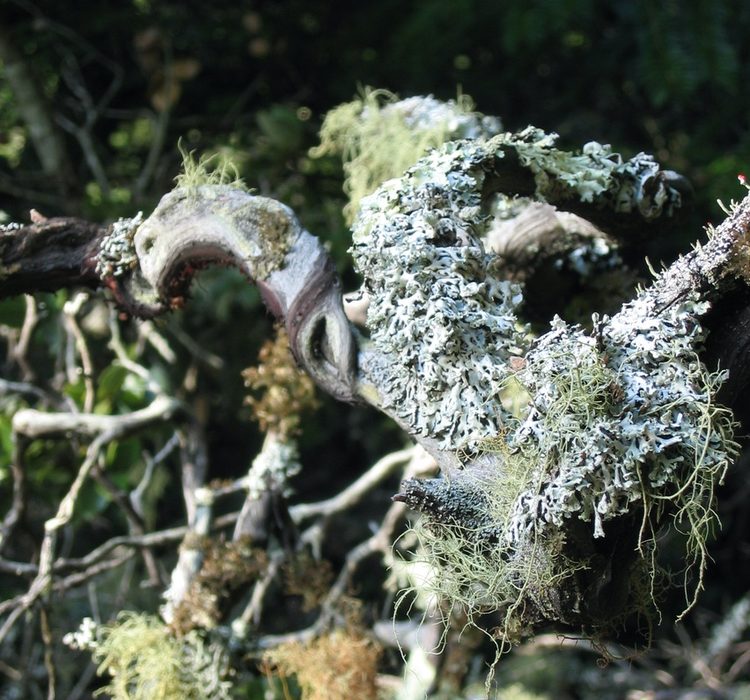
Sometimes it’s nice to come to a complete stop and notice the details. This photo was taken a bit off the more usual paths in Muir Woods in California.
ɕ
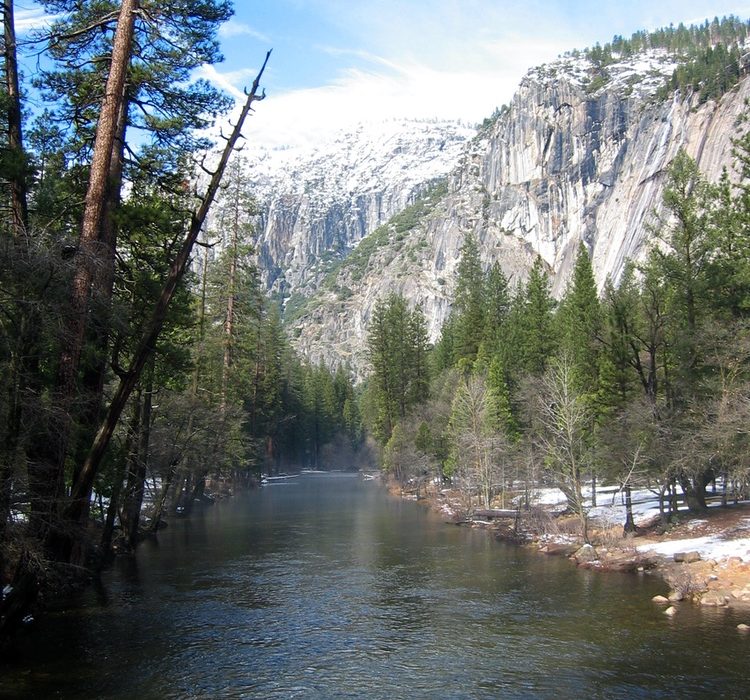
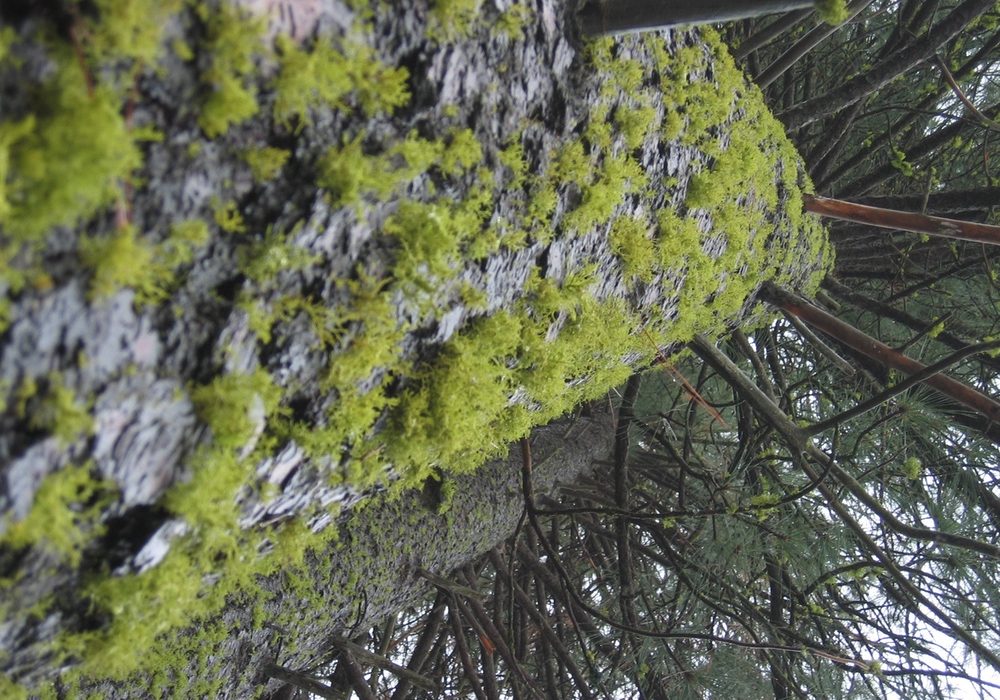
Photo circa 2008 from the actual pass above Badger Pass Ski Area in California.
Imagine you’re walking through a forest. I’m guessing you’re thinking of a collections of trees — what we foresters call a “stand” — with their rugged stems and their beautiful crowns. Yes, trees are the foundation of forestes, but a forest is much more than what you see.
~ Suzanne Simard from, How trees talk to each other
slip:4uteta3.
Go for a walk in the woods, and listen to this short TED talk. You may go into the wood seeing trees, but you’ll come out having heard much more.
ɕ
Unlike the other townspeople, who are constantly doing things together, he is content in his own company — a perfect embodiment of the great film director Andrei Tarkovsky’s advice to the young.
Most of all, the boy cherishes his time with Bertolt — the ancient oak he loves to climb.
~ Maria Popova from, Bertolt
slip:4ubabe1.
Trees.
More recently I’ve been drawn more strongly to photographing them, standing under them and just generally appreciating them.
ɕ

ɕ

ɕ
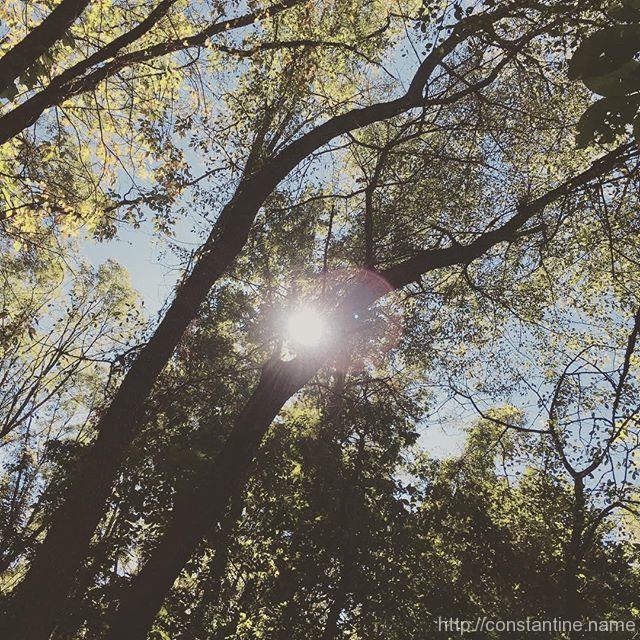
…marvelous, too marvelous for words!
ɕ